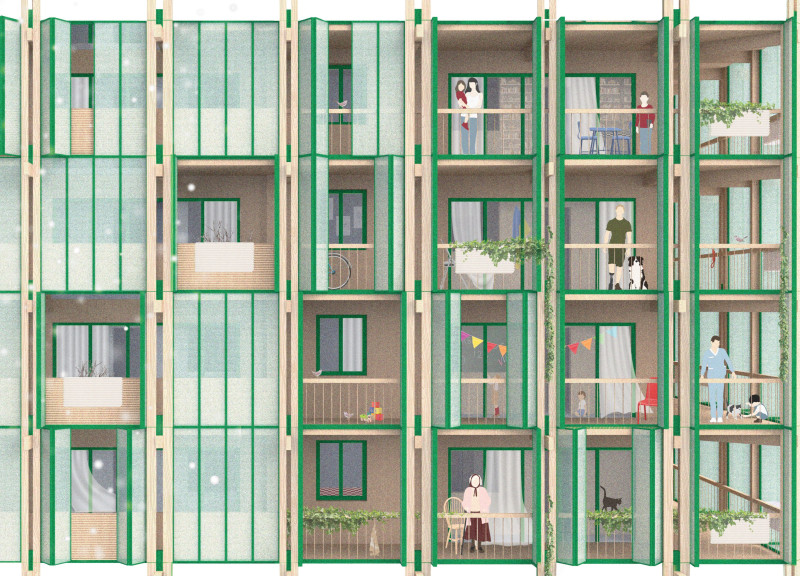5 key facts about this project
The overall concept of the design is centered around a harmonious blend of nature and built form, reflecting a keen awareness of the environment and its influence on human experience. By utilizing natural light as a primary element, the design thoughtfully incorporates large windows and skylights, allowing daylight to penetrate deeper into interior spaces. This approach enhances energy efficiency and promotes a healthy ambiance, contributing positively to the well-being of its occupants.
The materiality of the project plays a significant role in its architectural narrative. The design employs a combination of locally sourced materials, such as reclaimed wood, concrete, glass, and steel, which not only complements the aesthetic but also reduces the overall environmental impact. The use of reclaimed wood, in particular, adds warmth and texture to various structural elements, while concrete provides solidity and durability, ensuring that the building withstands the test of time. The introduction of glass as a key feature facilitates a visual connection with the surrounding landscape, blurring the boundaries between inside and outside.
Unique design approaches reflect the architects’ intent to create a responsive structure that adapts to its users’ needs. The layout encourages fluid movement, with open spaces promoting interaction while still allowing for privacy when required. Furthermore, the strategic placement of communal areas facilitates social interaction, creating opportunities for collaboration and connection among users.
Landscaping also deserves attention in this project analysis, as it integrates seamlessly with the architectural form. Outdoor spaces are designed not just for aesthetics but also for functionality, featuring areas for relaxation, play, and community events. Native plant species are incorporated to promote biodiversity and reduce maintenance requirements, demonstrating a commitment to ecological design principles.
In discussions surrounding the innovative aspects of the design, one notable feature lies in the incorporation of green technologies. The project includes solar panels and a rainwater harvesting system, reflecting an understanding of the urgency for sustainable solutions in contemporary architecture. These features contribute significantly to the building's operational efficiency and minimize its carbon footprint, embodying a forward-thinking approach to design.
The attention to detail throughout the project further enhances its appeal. Textural contrasts between the materials, variations in ceiling heights, and carefully considered color palettes imbue the space with depth and character. Each element within the design is chosen with care, ultimately working together to create a cohesive architectural experience that resonates with both visitors and community members alike.
This architectural project stands out not only for its aesthetic qualities but also for its commitment to sustainability, community engagement, and adaptability. The thoughtful integration of various architectural strategies creates a space that is not only functional but inviting and responsive to its environment. For those interested in delving deeper into the project, exploring architectural plans, architectural sections, architectural designs, and architectural ideas will provide a more comprehensive understanding of the vision and execution of this extraordinary endeavor.


 Gongqi Wei
Gongqi Wei 























